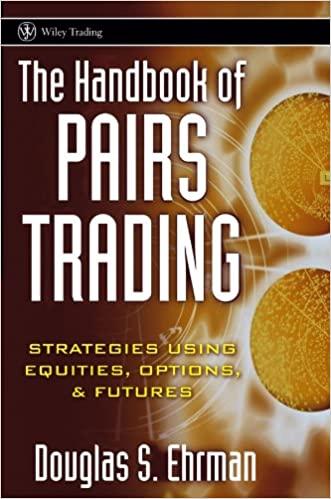


2014 2015E 2016E 2017E 2013 $1,100.00 INCOME STATEMENTS Sales Operating costs Depreciation Total operating costs S880.00 $25.00 EBIT $20.00 Less interest (INT) Earnings before taxes (EBT) Taxes Net income for common (NI). 40% $0.00 $10.00 10 Dividends to common (DIVs) Add. R/E / Shares of common stock Earnings per share (EPS) Dividends per share (DPS) Price per share (P) $26.40 2013 2014 2015E 2016 2017E BALANCE SHEETS Assets Cash ST Investments Accounts receivable Inventories Total current assets Fixed assets Total assets $10.00 $0.00 $140.00 $200.00 $250.00 $40.00 $0.00 $250.00 Liabilities and equity Accounts payable & accruals Line of Credit Total current liab. Long-term bonds Total liabilities Common stock Retained earnings Total common equity Total liab. & equity $210.00 $100.00 Industry 2013 2014 10.00% Hatfield 2015 8.00% % 2016 6.00% 2017 4.00% Selected Additional Data Sales growth Op costs / Sales Depr/FA Cash/ Sales Receivables Sales Inventory / Sales Fixed assets / Sales AP & accruals / Sales Tax rate 88.00% 12.00% 0.25% 11.00% 11.11% 33.33% 2.00% 40.00% Net operating profit after taxes (NOPAT) Net operating working capital (NOWC) Total operating capital (TOC) ATOC NOPAT - ATOC (FCF) Growth in FCF ROIC 12.50% Po Net Ppf Dpf Do g B-T ra Skye's beta Market risk premium, RPM Risk free rate, IRF Target capital structure from debt Target capital structure from preferred stock Target capital structure from common stock Tax rate Flotation cost for common $50.00 $30.00 $3.30 $2.10 7.00% 10.00% 0.83 7.00% 6.50% 45.00% 5.00% 50.00% 35.00% 10.00% Cost of debt: Cost of preferred stock (including flotation costs): Cost of common equity, DCF (ignoring flotation costs): MONDO Cost of common equity, CAPM: Cost of new stock using the DCF model Cost of new common stock based on the CAPM (Hint: Find the difference between re and rs as determined by the DCF method and add that differential to the CAPM value for rs.) WACC Inputs Equipment cost Net WC/Sales First year sales (in units) Sales price per unit Variable cost per unit Nonvariable costs $5,000 10.00% 500 $24.00 $17.500 $500 Market value of equipment at Year 4 Tax rate WACC Inflation $250 40.00% 11.00% 3.00% Years Depreciation and Amortization Schedule Year Initial Cost Accum. Dep. 1 2 3 20.0% 32.0% 19.0% 12.0% Equipment Depreciation Rate Equipment Depreciation Amount Ending Bk Value Equipment Net Salvage Values, in Year 4 Estimated Market Value in Year 4 Book Value in Year 4 Expected Gain or Loss Taxes paid or tax credit Net cash flow from salvage Projected Net Cash Flows 0 1 2 4 Initial Outflow Equipment ($5,000 Operating Cash Flows Units sold Sales price Variable costs 500 $24.00 $17.50 500 $24.72 $18.03 500 $25.46 $18.57 500 $26.23 $19.12 Sales revenue Variable costs Nonvariable operating costs Depreciation (equipment) Oper.income before taxes (EBIT) Taxes on operating income (40%) After-tax operating income Add back depreciation Operating cash flow Required level of net working capital Required investment in NWC Terminal Year Cash Flow Net salvage value Net Cash Flows NPV IRR MIRR









